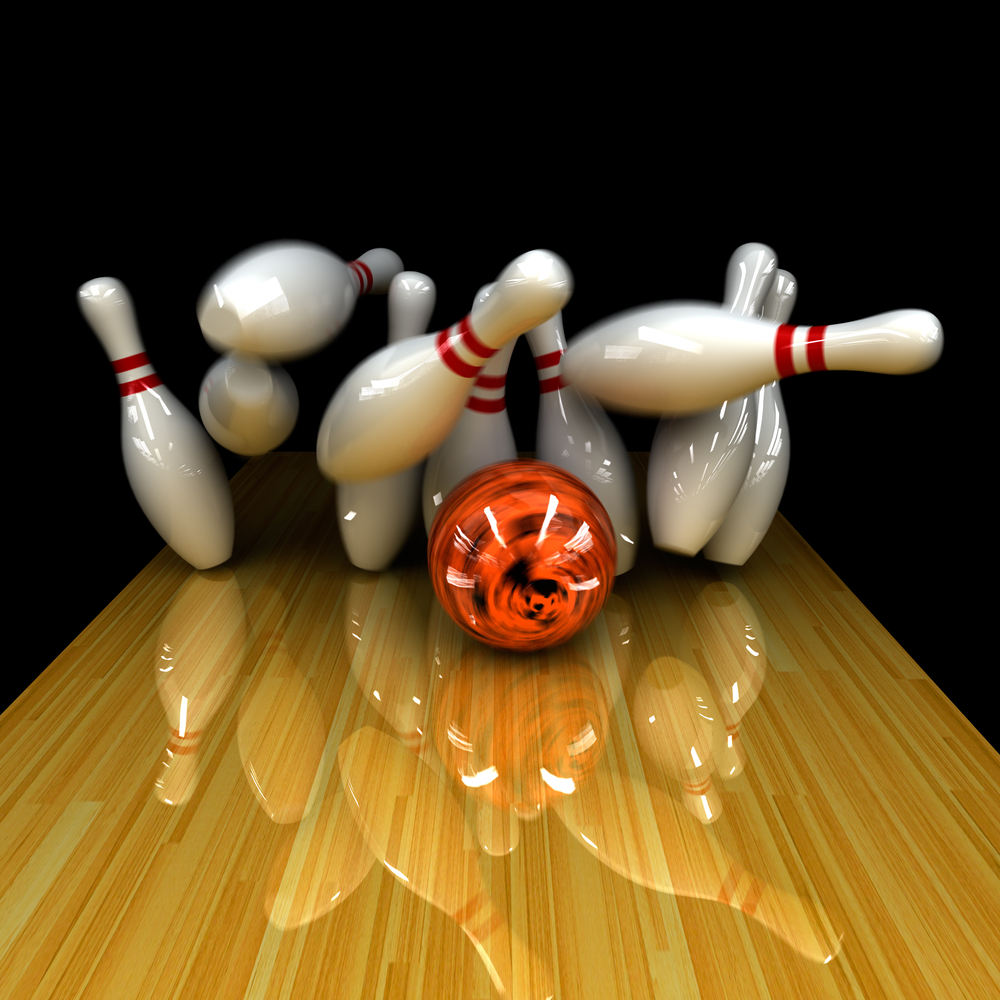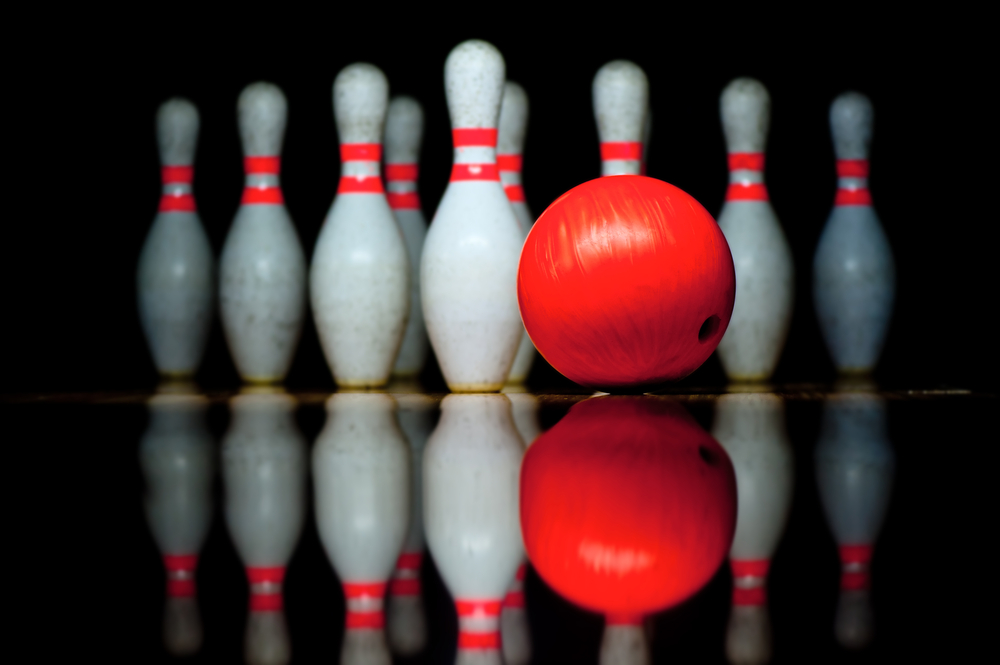
Are you looking to crack the code to endless strikes? We'll start by letting you know that there's no such code. However, there are ways to increase your chances of consistently throwing strikes.
And that's what we'll focus on in this article. By the end, you'll know the basics of how to bowl a strike, and you'll even snag some tips for improving your game. Let's get right into it!
How To Get a Strike in Bowling Every Time
Theoretically, you can get a strike every time - for a while, at least. But given the fact that we're human and there are so many variables in bowling, your chances of getting a strike every time are slim to none. Instead of striving for that, focus on increasing your chances of getting a strike in general.
And with some practice and guidance, you can absolutely do that.
The Basics of Hitting a Strike
Now, let's move into some basic tips for getting a strike. You'll want to memorize and practice the steps below if you want any chance of throwing more strikes. The tips are in no particular order.
Find Your Starting Position
Every bowler has a different starting position, but there are some generalities that you can follow. For starters, you'll want to stand with your feet shoulder-width apart and your weight evenly distributed. From there, take a step forward with the correct foot - your right foot if you're right-handed and your left foot if you're left-handed.
Most bowlers take 4 steps to get to the foul line and throw the ball – it works for most. But you should do what feels most comfortable and be consistent.

Choose the Right Bowling Ball
Your choice of bowling ball matters more than you think.
First, you'll want to make sure that the ball is not too heavy - you should be able to lift it with one hand without straining, and the ball roll should be smooth. Just remember that if it's too light, however, you won't be able to generate enough power for your shots. A good weight guideline is choosing a ball about 10% of your body weight.
Second, you'll want to pick a ball with the right grip. If the holes in the ball are too big, your fingers will slip out during your shot. And if they're too small, you won't be able to get them in at all!
And there’s always a chance that your fingers will get stuck during your release. Experiment until you find a ball that fits comfortably in your hand.
Lastly, consider the ball's coverstock. This is the material that the ball is covered in, and it affects things like the ball's hook potential and its reaction on the lane. There are three main types of coverstocks: polyester, urethane, and reactive resin.
If you're a beginner, we recommend sticking with a polyester coverstock. It's ideal for straight bowlers. But, if you really want to up your chances of getting strikes, move on to a urethane ball after getting the basics of bowling with a polyester ball down. Urethane offers a little more hook potential, which can help you get into the perfect spot to clear all the pins.
Most bowling alleys don't have urethane (or reactive bowling balls) available for rent, so you'll have to purchase one if you want to use it.
Pay Attention to Your Approach and Swing
Your approach plays a big part in your ball delivery - and, ultimately, your score. Here are a few things to keep in mind as you take your steps:
- As you take your steps, walk in a straight line and keep your eyes on your target arrow.
- Keep your arm close to your body as you swing it back.
- Bend your knees slightly as you swing the ball back. As you reach the forward part of your swing, extend your arm, keeping your arm straight, and push off with your back foot.
- Release the ball when it reaches shoulder level.
- Try not to turn your body as you release the ball - keep your shoulders squared to the lane.
- Once you find your stride, practice it until it becomes second nature. That way, you won't have to think about it when trying to focus on other things.
Wear Well-Fitting Bowling Shoes (And Socks!)
This one might seem obvious, but it's essential nonetheless. You need to be comfy if you want to bowl your best, and that starts with your shoes. Your bowling shoes should fit snugly but not too tightly.
They shouldn't slip off when you walk, but they also shouldn't pinch your feet. If you're renting shoes from the bowling alley, make sure to try on a few different sizes before settling on a pair. And don't forget about your socks! Wearing the wrong socks (or not wearing any at all) can lead to blisters, which aren't fun.
We recommend wearing socks that come up to at least your ankles - they'll help keep your feet nice and snug in your shoes.
Aim at the Pocket
The pocket is the sweet spot for strikes. It is the space between pins 1 (head pin) and 3 for right-handed bowlers and between pins 1 (head pin) and 2 for left-handed bowlers. If you can get your ball into this space, you'll activate a chain reaction that takes out all the pins.
Of course, it's not always easy to hit the pocket (especially at the right angle). But getting your ball into that space can make a big difference.

Know How to Hook the Ball
Straight bowling is fine for beginners, but if you're looking to up your game, you'll need to learn how to hook the ball. Hitting the pins straight on doesn't always result in a strike - sometimes, your ball will bounce off the pins and leave a few standing. But if you can get your ball to hook into the pins at an angle, you'll have a much better chance of taking them all down.
If you have a ball with mid to high hooking potential (like a urethane or reactive resin ball), you've won half the battle. Then all that's left to do is learn how to hook it. It's all in the flick of the wrist.
Right as you're releasing the ball, you'll want to put some spin on it by releasing your thumb from the thumb hole and then releasing your other two fingers. As you release your last two fingers, you'll sweep the ball from the side to the top in the direction you want the ball to go.
Put Some Umph Behind Your Shots
The last thing you need to do is put some power behind your throw. If you can get the ball down the lane with a little extra oomph, you'll have a better chance of taking out all the pins. Just make sure you don't put too much force behind it - if you throw the ball too hard, you might lose accuracy.
The key is to find a balance between power and accuracy. If you can do that, you'll be well on your way to bowling a strike every time. If you find that your ball is too heavy, it's okay to choose a lighter ball.
Related Articles
There you have it - a few tips to help you bowl a strike more often. Know that there's no magic formula for success, but if you follow these guidelines, you'll be well on your way to developing some serious skills. We hope this article has been helpful, and we wish you the best of luck on your bowling journey.
Don't ever lose sight of the fact that bowling is supposed to be fun - so enjoy yourself along the way!
Kira Byrd, a Certified Fraud Examiner, holds a B.S. in Accounting from the University of Alabama at Birmingham. With a passion for bowling from her childhood, Kira has poured her expertise and personal experiences into creating and nurturing Bowling For Beginners. Kira's mission is to meet new bowlers where they are and guide them toward consistently achieving higher scores. With a focus on skill development and strategic techniques, she empowers readers to take control of their game and unlock their true potential.
Bowling For Beginners embodies strict editorial integrity, ensuring reliable and unbiased information. Kira's commitment to delivering valuable insights and practical strategies is reflected in every article. Here's an explanation of our editorial policy and how we get money.





